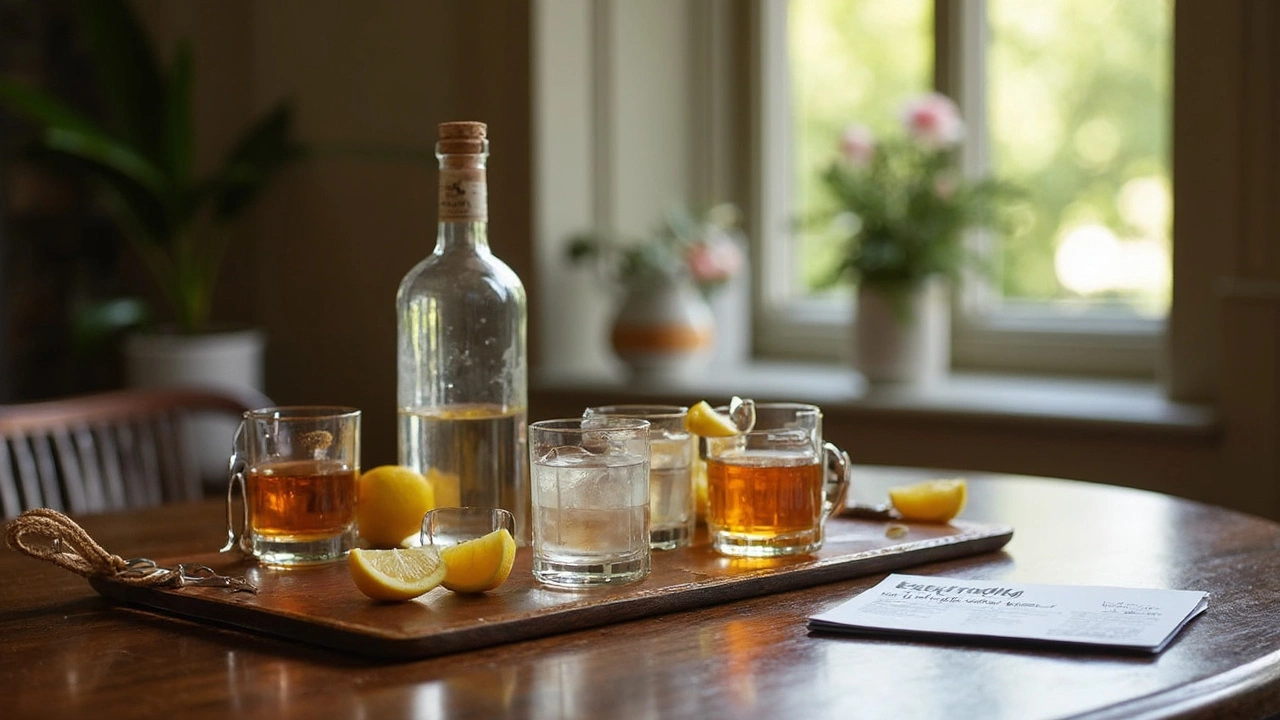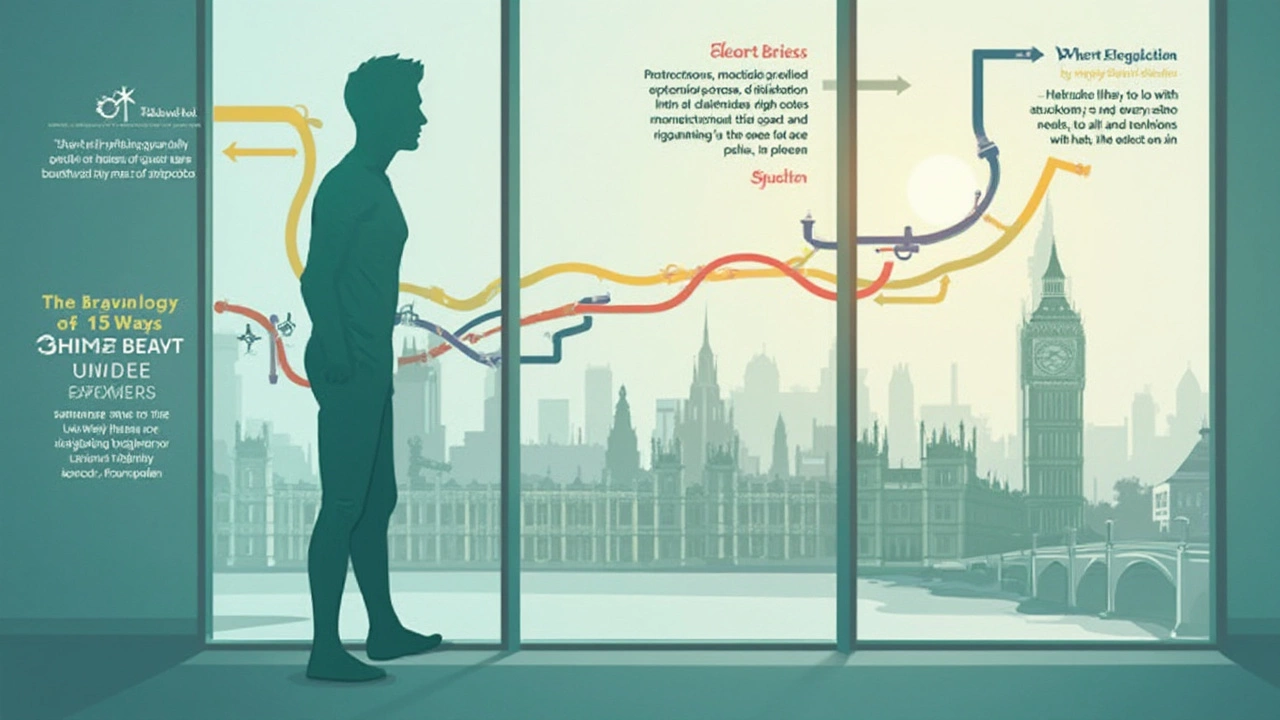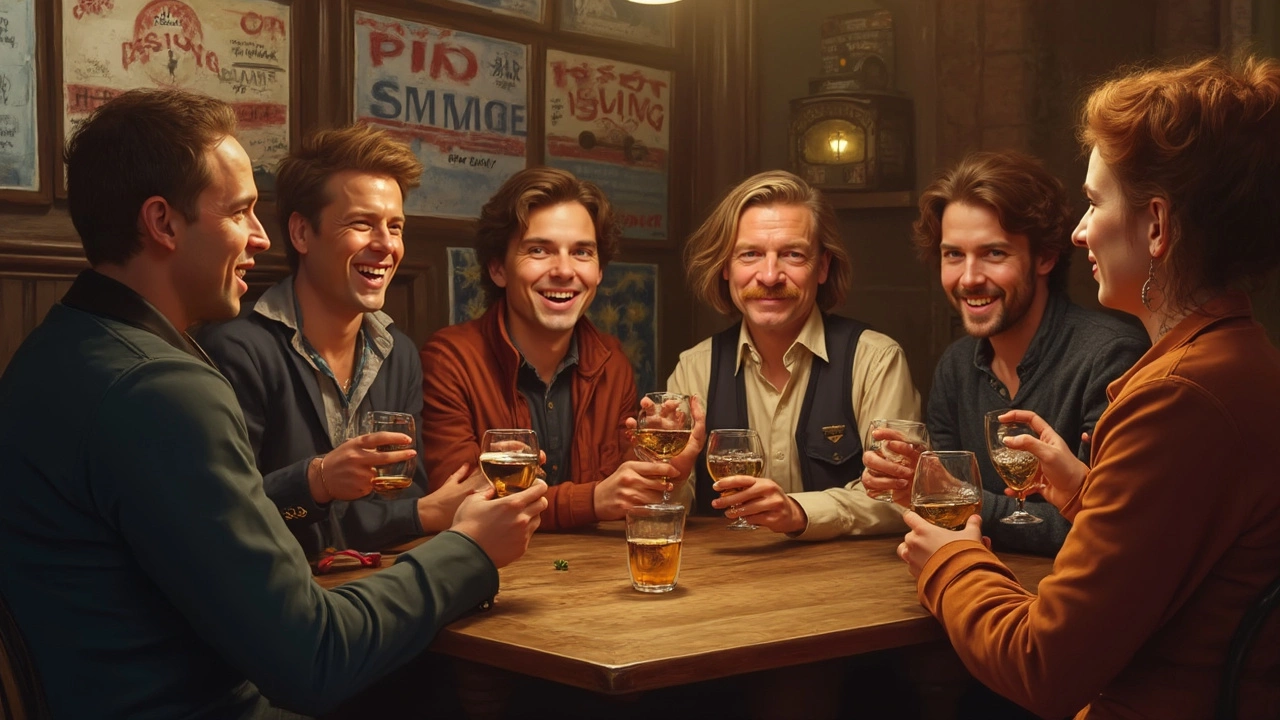Everybody has a buddy who claims one shot of tequila never hurt anyone, right? The truth is, your body doesn't care if it's vodka, gin, or that expensive single malt—alcohol is alcohol, and your liver treats it all the same. Still, the experience of spirits tastings offers a different vibe compared to sipping a glass of wine or downing a pint of beer. The serving sizes are smaller, but the alcohol content is way higher.
If you're curious about health risks, you need to know it's not the spirit itself that's the villain. It's all about the dose. For most people, having a small pour with friends at a tasting event now and then isn't a one-way ticket to health problems. But regular heavy drinking? That'll mess with your liver, your heart, even sleep and mood. Fun fact: Spirits don't have carbs or sugar unless you add mixers, so those calories come straight from the booze itself.
Wondering how to keep it safe during a tasting? Stick to smaller pours, drink water between samples, and don’t show up on an empty stomach. Pay attention to how you feel—headaches and indigestion are real signals, not badges of honor. You can appreciate craft spirits without turning it into a wild night. Next, let’s talk about some common myths and what science actually says about spirits versus other drinks.
- What Happens When You Drink Spirits?
- Health Risks—Are Spirits Worse Than Beer or Wine?
- Myths vs Facts: Clearing Up Confusion
- Spirits Tastings—Tips for Responsible Enjoyment
- How Much Is Too Much? Finding Your Personal Balance
What Happens When You Drink Spirits?
The second you take a sip of whiskey, vodka, gin, or any other spirit, your body gets to work. That burn you feel? That's high-proof ethanol heading straight for your stomach and intestines. Ethanol passes from your gut into your bloodstream within minutes. That's why a neat pour of spirits can kick in so quickly compared to beer or wine.
Your liver is the real workhorse here. It starts breaking down the alcohol using an enzyme called alcohol dehydrogenase. The breakdown forms acetaldehyde, which is actually toxic, but your body usually clears it fast unless you go overboard. If you keep pouring, your liver can't keep up, and alcohol builds up in your blood. That's when you feel tipsy, lose coordination, or make those not-so-great late-night texts.
Check out these quick facts on how your body processes spirits, compared to other drinks:
| Drink | Typical Serving Size | Average % Alcohol (ABV) | Time to Feel Effects |
|---|---|---|---|
| Spirits (vodka, rum, whiskey) | 1.5 oz (44 ml) | 40% | 10-20 min |
| Beer | 12 oz (355 ml) | 5% | 20-30 min |
| Wine | 5 oz (148 ml) | 12% | 15-30 min |
Your body also gets dehydrated because alcohol tells your kidneys to get rid of water faster. That's why spirits hit you harder if you're already thirsty. Getting buzzed might feel fun, but that pleasant warmth can turn into slurred speech and clumsy moves if you aren't careful.
- Keep in mind: Spirits hit your bloodstream faster. You might underestimate how much you drank and feel the effects a lot sooner than with wine or beer.
- Food slows down absorption. A greasy burger actually helps keep that shot of tequila from racing into your system all at once.
- People process alcohol differently. Body weight, genetics, and what you’ve eaten all matter.
Bottom line: Your body cares more about the amount of ethanol, not the type. Being smart about how you taste spirits can keep things safe and enjoyable. For anyone wondering, moderation really is key with spirits health.
Health Risks—Are Spirits Worse Than Beer or Wine?
People love to argue whether spirits are somehow worse than wine or beer. But at the end of the day, it’s all about spirits health and how much pure alcohol you’re knocking back—not the color of your drink or how fancy the label looks.
So how does your body treat them? No matter what you drink, your body processes ethanol the same way. Standard servings of beer, wine, and spirits each have about the same amount of pure alcohol. Here’s what “a drink” means for each:
- Beer: 12 oz (355 ml) at 5% alcohol
- Wine: 5 oz (148 ml) at 12% alcohol
- Spirits: 1.5 oz (44 ml) at 40% alcohol
One shot of vodka isn’t more dangerous to your organs than a glass of wine, if the pours are “standard.” The real trouble starts if you pour heavy, do rounds of shots, or mix with sugary sodas that add a calorie bomb.
Now, here’s where spirits tastings can trip people up: spirits go down fast, and you can get a buzz before you realize how much alcohol you’ve had. According to the CDC, heavy drinking means more than 4 drinks for men or 3 for women in a day. Binge drinking is 5 or more drinks in 2 hours for men—4 for women.
| Drink Type | Standard Serving | Alcohol Content |
|---|---|---|
| Beer | 12 oz | ~14 grams |
| Wine | 5 oz | ~14 grams |
| Spirits (vodka, whiskey, gin, etc.) | 1.5 oz | ~14 grams |
Is one riskier than the other long-term? Not really, if you keep it sensible. But spirits are easier to overdo, so folks who choose them are more likely to slip into risky drinking patterns if they’re not careful. Also, mixing liquor with energy drinks or sugary sodas brings its own risks—think heart palpitations, blood pressure spikes, and nasty hangovers.
Bottom line: Your best bet is to measure your pours, pace yourself, and avoid stacking spirits with mixers that sneak in extra sugar and calories. If you’re ever unsure, track your drinks and swap in a glass of water every couple rounds. Most health problems linked to any alcohol show up when things move from “occasional treat” to “regular habit.” Keep it occasional, and your risks stay far lower.

Myths vs Facts: Clearing Up Confusion
There are loads of stories floating around about drinking spirits, and most of them don’t really stand up to the facts. Let’s break down the main myths and see what’s actually true.
Myth 1: Spirits are more dangerous than beer or wine. People think spirits are chemical monsters, while wine is pure sophistication. It’s just not how it works. Your body cares about the amount of alcohol, not the “type.” A shot of whiskey has about the same alcohol as a glass of wine or a standard beer. The problem comes when folks throw back spirits faster because of small serving sizes. Sipping slowly during spirits tastings lets you actually notice when you’ve had enough.
Myth 2: Dark spirits (like rum and bourbon) are always worse than clear ones. Here’s the deal: darker spirits do have more “congeners” (byproducts from fermentation), which can make hangovers worse for some. But the difference only really matters if you’re drinking a lot. If it’s just a tasting and you’re keeping it chill, it doesn’t matter much if your spirit is clear or amber.
Myth 3: Drinking spirits 'neat' or 'on the rocks' is safer than mixing with juice or soda. Not true. Adding a mixer doesn’t change how your body handles the alcohol—if anything, mixers just make it easier to drink quicker or mask the strong taste, leading you to drink more without realizing it. Plus, soda or sweet mixers tack on extra sugar and calories.
Fact: There’s no secret way to make spirits healthy. No, that famous whiskey from Scotland won’t ward off colds any better than a vodka tonic. And tequila shots won’t boost your metabolism. If you stay mindful on pour size and keep an eye on how often you drink, you’ll dodge most slip-ups.
- Check the ABV (alcohol by volume) before pouring.
- Stick to one type of spirit during tastings, as mixing types can make it tough to keep track.
- Watch out for big pours—most tasting servings are about 1 ounce, not a full glass.
The bottom line: Focus on spirits health by paying attention to what goes into your glass and how much. Don’t let sketchy myths steer your habits—science and a little self-awareness go further than Instagram advice or barroom legends.
Spirits Tastings—Tips for Responsible Enjoyment
First thing—spirits tastings aren't supposed to be a race to the bottom of the bottle. Actual tasting events are more about noticing flavors, scents, and how the drink feels in your mouth than about getting buzzed. Savoring spirits is like sampling good coffee or chocolate; it's about quality, not quantity.
You don't have to be a pro to keep things smart. Here's what helps everyone enjoy spirits tastings without regret:
- Eat beforehand. Spirits hit harder when you've skipped food, so grab a snack or meal earlier. Something with protein and some fat (think cheese or nuts) works great.
- Hydrate. Water should be your tasting buddy. Drink a glass after every pour. Dehydration makes hangovers much worse, and you'll taste spirits better if your mouth isn’t dry.
- Small sips go a long way. Don't toss back a whole shot. A typical spirits tasting pour is just 0.5 to 1 ounce—barely more than a sip. Give each sample a swirl, take a moment with it, and see what you notice.
- Know your limits. Nobody hands out trophies for "most samples in an hour." If you start feeling dizzy or overly relaxed, it’s time to slow down or stop.
- Don’t mix with lots of sugary mixers during tastings; straight spirits help you really taste what’s going on, and your body isn’t dealing with a sugar rush on top of the alcohol.
Check out some numbers—just because the glasses are small doesn’t mean you’re drinking less alcohol. Here’s how a few popular tasting pours stack up:
| Beverage | Standard Pour Size | Avg Alcohol % (ABV) | Pure Alcohol (oz) |
|---|---|---|---|
| Whiskey | 1 oz | 40% | 0.4 |
| Vodka | 1 oz | 40% | 0.4 |
| Rum | 1 oz | 40% | 0.4 |
| Craft Gin | 0.5 oz | 42% | 0.21 |
| Beer (just for comparison) | 12 oz | 5% | 0.6 |
That single ounce of whiskey is two-thirds what’s in a whole beer, but you’ll finish it in one sip instead of twenty—so pace yourself.
"The key to safe alcohol tasting is moderation, hydration, and listening to your body. Spirited enjoyment doesn’t mean reckless drinking."
— National Institute on Alcohol Abuse and Alcoholism
If you’re tasting with friends, help each other keep track and stay honest. Having a designated driver or using rideshare after a tasting event is always a smart call. No spirit is worth risking your safety or your night.
And honestly, nobody wants to wake up regretting last night's choices. Enjoying spirits responsibly means you can actually remember the flavors and stories, not just the headache.

How Much Is Too Much? Finding Your Personal Balance
Most folks want a clear number to tell them when a little fun turns risky. The Centers for Disease Control and Prevention (CDC) puts the line at up to 2 drinks a day for men and 1 for women. That’s not giant cocktails or heavy pours—in spirit terms, each 'drink' means about 1.5 ounces of 80-proof liquor. So those tiny pours at a tasting? They add up quick if you’re not careful.
Your age, weight, genes, and even what you just ate all impact how you process alcohol. What knocks me off my feet might barely affect Hannah. It’s not about bragging rights—it’s about knowing your own sweet spot so you can enjoy without the rough morning after.
"Drinking too much, especially over time, can take a serious toll on your body—raising blood pressure, harming your liver, and even upping your cancer risk. The less you drink, the lower your risk." — Mayo Clinic
If you want to avoid trouble, keep tabs on what you’re having. Here are practical ways to stay on track at a spirits health event or tasting:
- Count your tastings. Four one-ounce pours equal about three regular drinks.
- Alternate each pour with a glass of water or a snack. Seriously, it works.
- Don’t play catch-up if you show up late. Your liver won’t thank you.
- If you feel a buzz, press pause. No harm in waiting a bit before your next sip.
No guide will ever replace listening to your own body. If you ever start making decisions you regret after a tasting (or just feel lousy), that's your signal to pull back. The goal is to enjoy flavors and good company, not test your limits.


